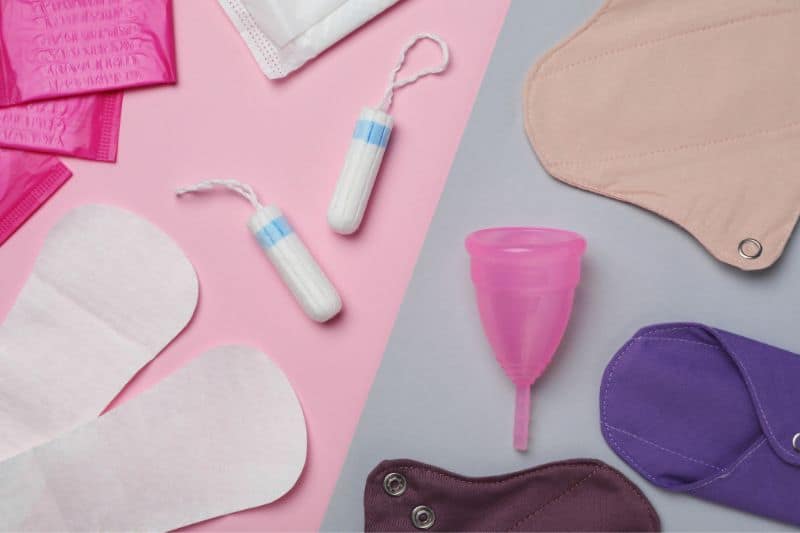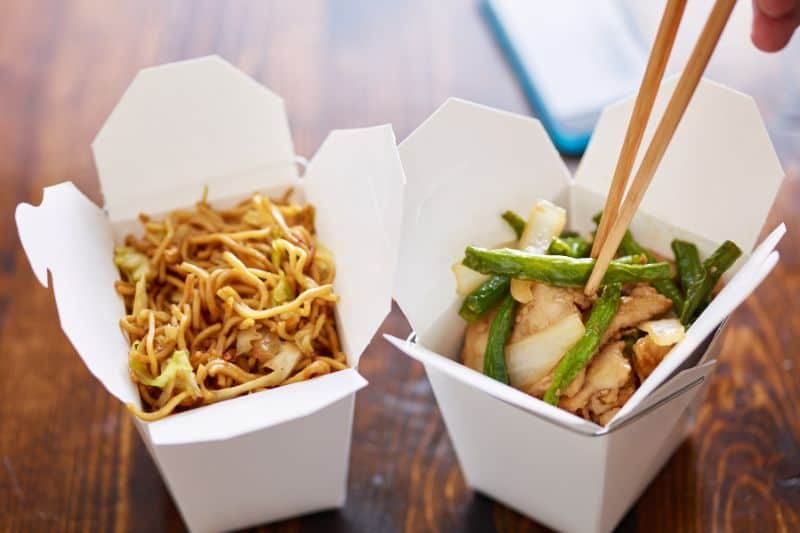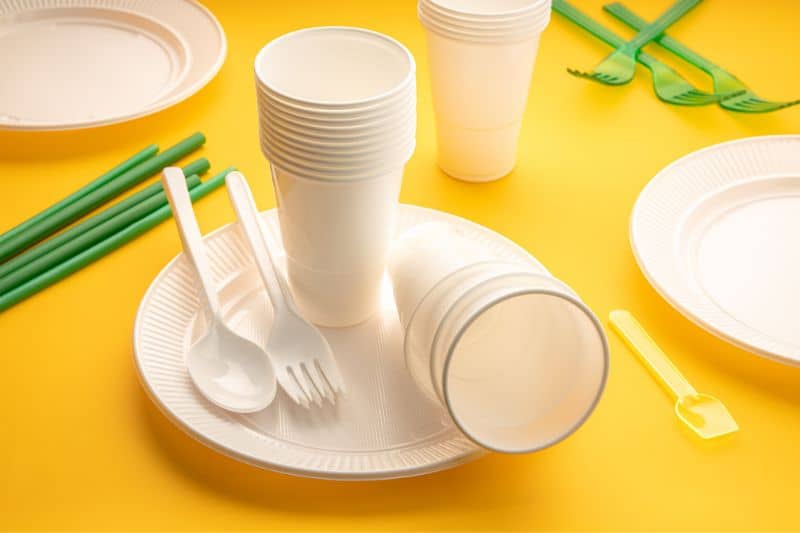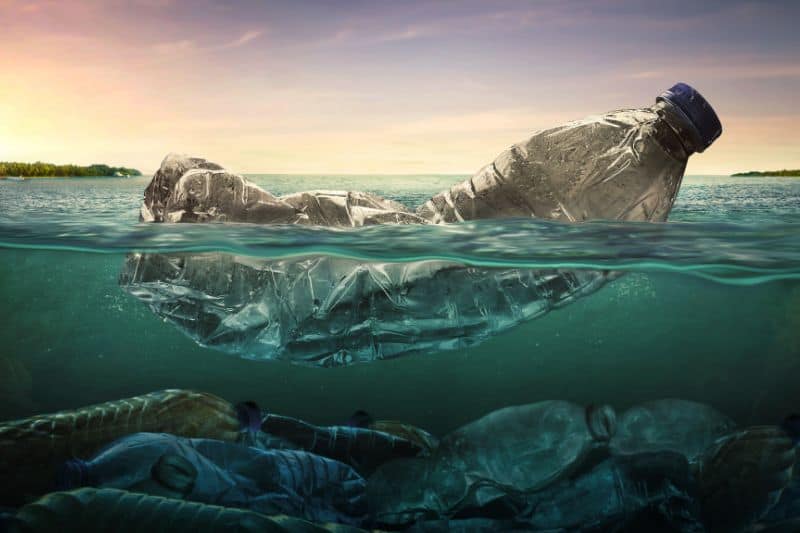Are you a champion for the environment, striving to turn over a new leaf in your consumption habits?
Maybe you ain’t even that.
Perhaps you’re a curious mind eager to learn more about how your purchasing choices can sway the course of our planet’s future.
Either way, great! We’ve got you covered.
The choices we make in our everyday purchases can immensely bring us closer to making our planet healthier or to leaving a wasteland for our descendants. Hence, it’s highly essential to be mindful of our shopping practices.
This raises the question: What products must I avoid to make the planet a better place for all?
Well, you’ve come to the right place! We’ll explore 20+ things that you shouldn’t buy as an environmentalist.
Let’s get started!
1. Bottled Water
We’ve all heard this common adage: “Water is life”. And yes, that’s true because life on earth cannot exist without water. But then, we must pay attention to how this life-giving resource is packaged.
In most cases, the bottles used for packaging this water are plastic, which is hazardous to the environment. Sadly, even with this widely known fact, a staggering 1 million bottles of water are sold worldwide every minute. Even worse, only 12% of these bottles are recycled, clearly showing the level of menace this product poses to the environment.
So, as an environmentalist or someone striving to be one, you should avoid buying bottled water and instead invest in a reusable water bottle
2. Plastic Bags
Another product that poses a significant threat to our planet’s well-being is plastic bags. These single-use bags are a menace to the environment, with over 5 trillion plastic bags used worldwide every year.
Plastic bags take centuries to decompose and often end up in our oceans, harming marine life and polluting our water sources.
Countries like Kenya, Bangladesh, France, and Morroco have implemented bans on plastic bags to reduce their usage. However, if your country has yet to enforce such regulations, it’s up to you as an individual to consciously choose to avoid them.
As an environmentalist, you can opt for reusable cloth bags or biodegradable alternatives.
3. Plastic Straws
Straws may seem like a small item, but their negative impact on the environment is significant. Every day, 500 million straws are used in the United States. To put that into perspective, the annual amount of straws produced is enough to fill over 46,400 large school buses!
So yes, as small as they may seem, their detrimental effects on the environment are colossal. Luckily, there are now reusable and sustainable alternatives to plastic straws, such as metal or bamboo straws, that you can opt for as an environmentalist.
4. Paper Napkins
While paper napkins may seem like a better alternative to plastic, they still have a significant impact on the environment. The production of paper napkins requires cutting down trees and uses large amounts of water and energy resources.
As an environmentalist, you can choose to use cloth napkins or opt for recycled paper napkins instead, which are more sustainable options.
5. Overpackaged Products
We’ve all bought this one product in a huge box filled with layers of packaging, only to find the item is tiny. Overpackaged products are a common sight in most stores, and they significantly contribute to waste generation.
As an ambassador of sustainability, you can choose to support brands that use minimal or eco-friendly packaging methods. You can also opt for refillable containers (where applicable) to reduce the amount of packaging waste you generate.

6. Feminine Hygiene Products
Who would have thought that something as essential as feminine hygiene products could pose a threat to the environment?
Unfortunately, as revealed in an article published by National Geographic, most of female hygiene products contain plastic and are not biodegradable.
To save the planet, you will want to opt for reusable alternatives like menstrual cups or cloth pads. In fact, there are lots of strong reasons why switching to reusable menstrual products is worth it.
7. New Books
This goes to the avid readers who also want to be responsible environmentalists. While buying new books may seem like a harmless habit, it significantly impacts the environment.
The production of paper requires the cutting down of as many as 200 million trees every day. Plus, once made, the transportation of these books also contributes to carbon emissions.
As an alternative, you can choose to borrow books from libraries or purchase second-hand books. Or, with technological advancement, you can opt for e-books, which have a significantly lower environmental impact.
8. Cheap Products
We all want the best value for money in everything we buy. But a higher value for money doesn’t always mean we go for the cheaper products.
In fact, as the saying goes, “cheap is expensive”. Cheap products are often made from low-quality materials and have a shorter lifespan, meaning you’ll end up replacing them more frequently.
This cycle of continuous consumption significantly contributes to waste generation and carbon emissions, especially in their production and transportation to the market.
So, choose durable products, even if they may seem pricier at first. You’ll save money and contribute to a more sustainable planet in the long run.
9. Souvenirs
If you’re a frequent traveler, you can attest that the temptation to buy Souvenirs as a way to remember your travels is often irresistible. However, most of these souvenirs are mass-produced and made from unsustainable materials.
The solution? To avoid buying them. Instead, you can capture the memories with your phone camera. This costs less and makes it even possible to share those memories with friends and family back home. Plus, it saves you the hassle of carrying extra weight in your suitcase while traveling.
10. Paper Towels
You’re avoiding paper towels for the same reason you’re opting for reusable cloth napkins and e-books. Paper towels are made from trees, and their production contributes to deforestation and greenhouse gas emissions.
Instead of paper towels, use cloth towels or opt for eco-friendly paper alternatives made from recycled materials.
11. Fast Fashion
Just saw a cute dress on sale for less than $20? As an environmentalist, you’ll think twice before buying it. The fast-fashion industry is among the largest polluters globally, with its massive carbon footprint and contribution to water pollution.
That’s because fast fashion promotes the production of low-quality, disposable clothing, which ends up in landfills after a few uses.
As an alternative, you can choose to support sustainable and ethical fashion brands that prioritize environmental responsibility in their production processes. You can also buy second-hand clothes or rent outfits for special occasions instead of buying new ones every time.
12. High VOC Paints & Finishes
Before you give that old wall a fresh coat of paint, there’s something you should know. Most paints and finishes contain high levels of volatile organic compounds (VOCs), which, according to the National Library of Medicine, can cause severe harm to health and the environment.
But does that mean you avoid paints and finishes altogether? Well, not exactly. As an alternative, look for low or zero-VOC options when buying paints and finishes. These products have lower emissions and are safer for humans and the planet.
13. Chemical Pesticides & Herbicides
Who doesn’t hate pests and weeds? But, as much as they may seem like a nuisance, the use of chemical pesticides and herbicides poses a significant threat to the environment.
These toxic chemicals can contaminate soil and water bodies and kill non-target organisms that play essential roles in conserving biodiversity.
As an environmentalist, you can choose to go for organic alternatives or try natural pest control methods like using essential oils or introducing beneficial insects into your garden. The wood ash produced from your fireplace can also be a great weapon against some pests.
14. Single-Use Plastics
By now, we all know the harm single-use plastics cause to our environment and marine life. Yet, they are still widely used in our day-to-day lives.
For the sake of our planet’s health, you can reduce your consumption of single-use plastics by carrying reusable alternatives like water bottles, utensils, and bags. You can also choose products with minimal packaging and support companies prioritizing sustainable packaging practices.

15. Take Outs
Let’s be honest: Sometimes cooking at home can be a hassle, and take-outs seem like the perfect solution. However, these take-out containers are usually made from Styrofoam or plastic and end up in landfills after use.
As an alternative, you can bring your own reusable containers when getting take-outs or choose restaurants that use sustainable packaging options. Or better yet, make an effort to cook meals from your home.
In fact, your home-cooked food is even healthier and lets you know what exactly goes into your meals.
16. Conventional Cleaner
Who doesn’t love keeping their home clean and fresh? But did you know most conventional cleaners contain harsh chemicals that harm humans and the environment?
Instead, use natural cleaning alternatives like vinegar, baking soda, and essential oils. These products are cheaper, safer, and have a significantly lower environmental impact. Plus, they won’t leave behind any toxic residue on your surfaces. You can even make your own eco-friendly cleaning products!
17. Meat
This may sound a bit harsh to the meat lovers reading this. But here’s a fact: meat production, especially beef and pork, has a significant environmental impact.
That’s because meat generates methane gas, which is up to 20 times more potent than CO2 as a greenhouse gas.
So, if you can entirely avoid meat, that’s even better. You can work with more sustainable protein sources like beans, legumes, and tofu. If staying away from meat is extremely difficult for you, reduce the frequency and amount you eat.
18. Teabags
It may come as a shocker to some, but many teabags contain plastic called polypropylene, making them non-biodegradable.
Plus, this plastic can cause a wide range of health issues, ranging from endocrine disruption and reproductive toxicity to cancer risk and problems with metabolism and nutrition, as revealed in a study published by the National Library of Medicine.
As an environmentalist, you can opt for loose-leaf tea or look for brands that use biodegradable materials in their tea bags. You can also choose to compost your used teabags if they’re made from natural materials.

19. Disposable Cutlery
Do you love to go on picnics or nature adventures with friends? Or are you someone who often shows up at social gatherings? Chances are that you interact with disposable cutlery and plates more often.
But hey, do you know just how much of an environmental threat single-use cutlery is? Besides the apparent plastic pollution, producing these items requires significant resources and energy. So, as an eco-conscious mind, avoid them as much as possible.
As an alternative, suggest to your friends and family to bring their own utensils or opt for biodegradable options when planning outdoor events. You can also carry your own reusable cutlery set wherever you go.
For social events, you can recommend that the host consider working with caterers who prioritize sustainability and use washable, reusable dishes and utensils.
20. Beauty Products
Our number 20 mostly goes to the ladies. Sorry guys! But that’s not to say you’re completely off the hook.
Most beauty products, including makeup, skincare, and hair care products, contain harmful chemicals like parabens and phthalates that can harm your health and the environment.
So, as an eco-conscious consumer, opt for natural or organic beauty brands. You can also go DIY by making your own skincare products using natural ingredients like coconut oil, honey, or avocado. These alternatives are not only healthier but also kinder to the planet.
21. Plastic Ziplock Bags
We all love the convenience of plastic ziplock bags. They are great for storing snacks, freezing food, and keeping small items organized while traveling.
But here’s a reality check: these bags take centuries to decompose, and they ultimately end up in landfills or our oceans, where they harm marine life.
Luckily, more sustainable options exist, like silicone reusable bags or biodegradable bags made from plant-based materials. You can also opt for reusable containers when packing food or organizing items instead of plastic bags.
22. Styrofoam Cups
Lastly, we have the infamous Styrofoam cups. Did you know that styrofoam never decomposes fully? They break down into smaller pieces and release toxic chemicals into the environment.
Avoid them at all costs! Instead, choose reusable cups or opt for compostable options when necessary.
These are just a few everyday items that pose serious environmental threats. As an environmentalist, it’s essential to be aware of the potential impact of our daily choices and make conscious decisions to minimize harm to the planet.
So next time you’re about to purchase any product or use a single-use item, ask yourself: Is there a more sustainable option? Can I reduce my consumption in any way? Small actions lead to significant changes, and we all have the power to make a positive impact.






